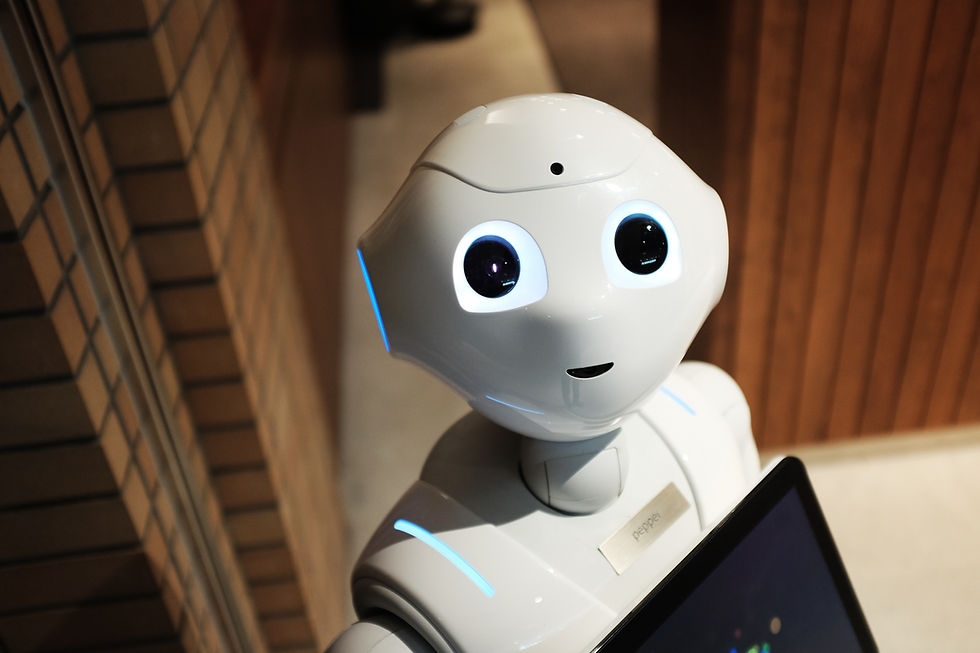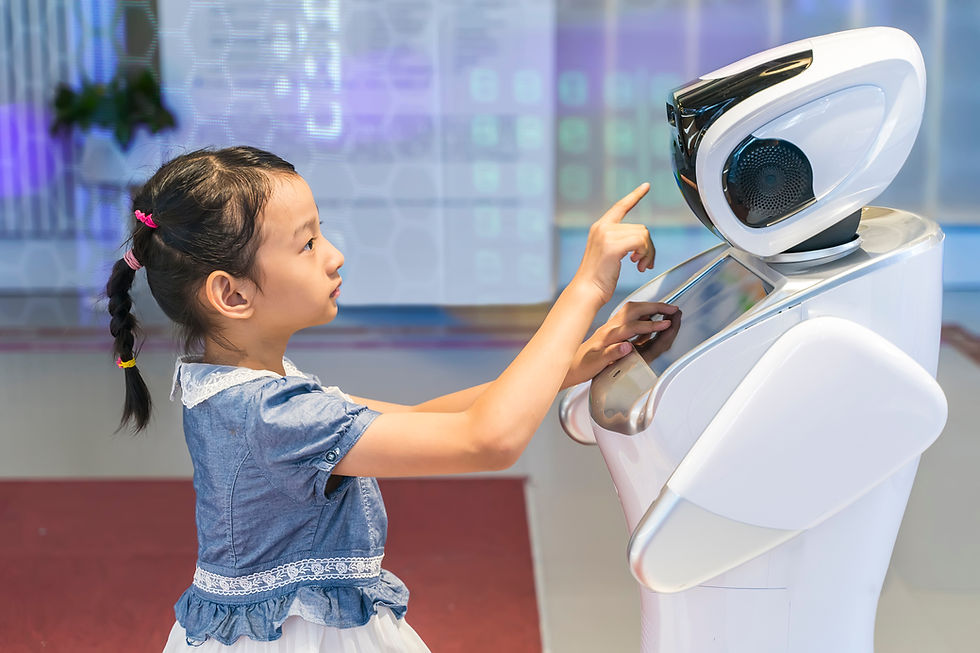AI Literacy & The Responsibility of Educators
- Barbara Farland

- Jun 11
- 5 min read
Updated: Sep 26
Mention artificial intelligence (AI) to today’s teachers, and many respond with grimaces and groans. It leads to cheating, they say. Students don’t really think when they use AI, others add. A recent Pew Research Center survey revealed that 25 percent of teachers believe AI “does more harm than good.” According to the same survey, nearly half (47 percent) of all teachers are in a quandary: they don’t know if AI is good for education or not.

In other words, confidence is not the prevailing feeling among teachers when it comes to AI. But, like it or not, AI is here and on the move in all areas of life—and educators bear a responsibility to acknowledge that reality and train students for it.
This is not entirely foreign territory for our society. There was a time when basic reading and writing were not commonplace; educational institutions spurred our value of literacy. Then came the digital age, and schools responded with curriculum and equipment to help improve students’ digital literacy. Today, we are faced with another challenge: to coach students in their AI literacy.
There are some educators and other thought leaders from around the world who have recognized AI’s evolving prominence and benefits. What are the primary takeaways from those who are addressing AI head-on? More than that, what mindset around AI do they suggest makes the best sense in the classroom? It all comes down to three key words: obligation, exploration, and application.
An Obligation to Focus on AI Literacy
As mentioned above, we have entered a new age in which AI is playing a powerful part. Though AI-generated material may frustrate us, look weird, contain a bunch of errors, etc., more and more individuals and businesses are relying on it daily. That means that students are not only exposed to AI regularly, but also need instruction on how to use it productively and professionally.

Lower Merion High School in Ardmore, Pa., for example, is among many schools across the nation that have recognized their obligation to address AI’s influence and availability. In fact, Lower Merion H.S. shares its positive stance on AI on its website:
...we believe in preparing students for the future. Our students will most certainly be engaging with artificial intelligence in years to come. As such, we view it as partly our responsibility to teach them how to use new technology and tools in ways that are appropriate, responsible and efficient… Rather than ban this technology, which students would still be able to access off campus or on their personal networks and devices, we are choosing to view this as an opportunity to learn and grow.
In other words, Lower Merion feels a natural obligation to educate students on a tool that will undoubtedly shape their personal and professional lives for years to come. Lower Merion and other schools know that if they don’t show students how to use AI properly, ethically, effectively, etc., young people will devise their own methods with little thought to appropriateness, safety, etc.
A Matter of Exploration, Not the Means to an End
This is what Dr. Jules White, a computer science professor at Vanderbilt University, emphasizes in his AI-geared class through Coursera.org: to be useful in education, AI must be considered a tool of “exploration.” While many students trust AI-generated findings and content as the means to an end—an answer to a question, the completion of an essay, etc.—AI is best used as a tool to grow evaluation skills and inspire further investigation and experimentation.
An explorative mindset begins with teaching students to be discerning and not to take AI’s word as golden. How does an AI-generated response make sense? What does it get wrong? What information doesn’t fit with the prompt? What is missing in the response? In other words, a lot of thought should be invested in picking apart what AI returns, then investing even more thought into where to take one’s exploration from there.
Yann LeCun, the Chief Scientist at Meta AI, is known for saying, “Our intelligence is what makes us human, and AI is an extension of that quality.” LeCun’s words embody the overall spirit of good education around AI. We need to remember where real intelligence lies: with the student. And we need to remember the most noble purpose of AI: to serve as an accessory to human intelligence, not as a replacement.

AI & Workplace Application
Finally, as mentioned above, organizations are expecting their employees to use AI in their day-to-day jobs. This means that today’s students need to be prepared for the future and how AI will likely intersect with their chosen careers.
In the educational realm, teaching students how to use AI is one thing, but real-world application is another. As a first step, many teachers are steering students from the flimsy claim that AI will replace the need for humans in the workplace. Instead, Ginni Rometty, former CEO of IBM, puts the importance of AI aptitude in this light: “AI will not replace humans, but those who use AI will replace those who don't."
Microsoft has published a 10-point list on why workplaces are relying on AI for business. The following are some of the key benefits on that list:
Increased productivity in routine tasks (e.g., answering e-mails), which frees up more time for more fulfilling projects that require people’s creativity and innovation.
Streamlined processes in which AI provides helpful forecasts and predictions, and suggests workarounds for broken equipment.
Enhanced customer communication, including 24/7 assistance and personalized solutions.
Better informed decisions that consider AI’s input but honor the importance of human evaluation and experimentation.
All together, this means that AI-competent employees affect the bottom line, and résumés that mention some AI experience are rising to the top. The need for savvy AI users is real and growing, and educators are encouraged to prepare the next generation for the world that awaits.
The Private School, One-to-One Difference

When it comes to teaching appropriate and responsible use of AI, hands down, private one-to-one schools like Brightmont Academy are the best equipped. It’s where students have constant supervision and guidance to learn when AI is a good option, what questions to ask, and how to discern the accuracy and credibility of AI’s output. Furthermore, since growing student confidence is already one of Brightmont’s main objectives and specialties, it’s where confidence naturally becomes part of AI conversations and practices; students better understand their value as human beings and how their unique voices, decisions, and innovations have more merit than anything AI produces.
In short, it’s at Brightmont where true AI competence can materialize. Teachers at Brightmont take seriously their obligation to shepherd students in this area, to model a wise and confident mindset around AI, and to help students set their sights on the future. And the positive difference, time and time again, is clear.
Source:

Barbara Farland is an English & Social Studies instructor at Brightmont Academy in Plymouth, Minn. She holds a master’s degree in Business Communication from the University of St. Thomas and, prior to pursuing a second career in education, worked as an award-winning public relations and communications professional in both the corporate and nonprofit sectors. As a “storyteller by nature and teacher at heart,” Barbara continues to contribute to various anthologies, among other writing projects.



Comments